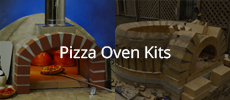Most cuts are using a wood block or jig to push the brick through, even if it's steadied with my hand. And NO BEER until all the cuts are done and the table saw unplugged!
I do it just the opposite. Since I cut with a non-segmented, continuous rim blade, I don't start until the saw is plugged in and I've had a beer.

Nice-lookin' dome, by the way.
John







 Because once I wetted down the new bricks, and deglazed the blade, it's back to cutting like butter. When they were dry, I'd have to run concrete through the blade after every brick or two, and the cutting was a chore.
Because once I wetted down the new bricks, and deglazed the blade, it's back to cutting like butter. When they were dry, I'd have to run concrete through the blade after every brick or two, and the cutting was a chore.
Leave a comment: